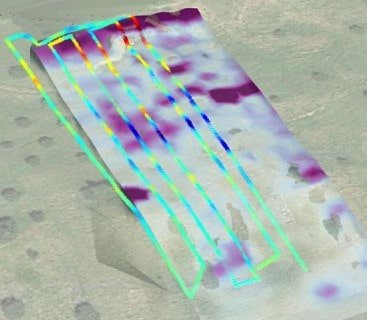
RDSS long term strain in a landslide prone hill after winter storms showing tension at the top and compression at mid height – the background is data on water content from Electrical Resistance Tomography courtesy of British Geological Survey.
OptaSense today published a significant white paper on the application of Rayleigh Backscatter Sensing to extend the reach of current Distributed Acoustic Sensing (DAS) devices to Strain and Temperature – bringing RDTS and RDSS: Rayleigh-based versions of Distributed Temperature and Strain sensing. Static Strain, Temperature & Acoustics from one device.
Focusing on a year of work with the British Geological Survey (BGS) at a National Landslide Laboratory in the UK, the work demonstrates the accuracy of the technique, and at the same time, illustrates the benefit of having thousands of channels of data that can offer a milli-Kelvin and micro-Strain sensitivity without averaging, in real time – all the time. All of this is achieved in parallel with full spectrum acoustic data opening the door to passive time-lapse seismic imaging. Together these techniques can deliver enhanced knowledge of the internal and surface state of earthen assets such as levees, dykes and dams over great distances.
You can download our Executive Summary here or contact us for the full paper at [email protected].

